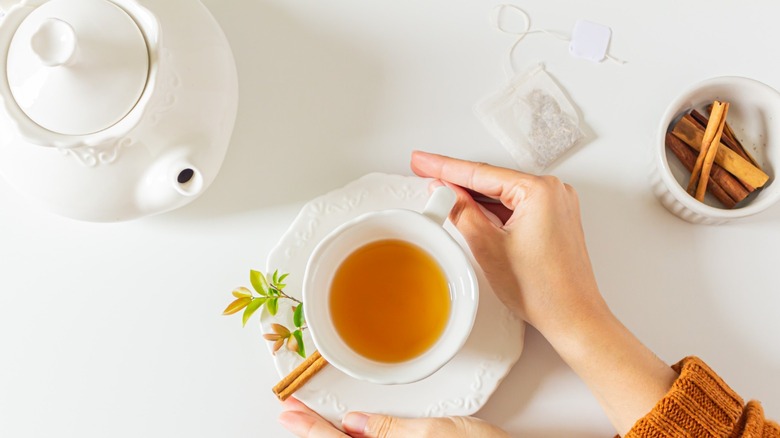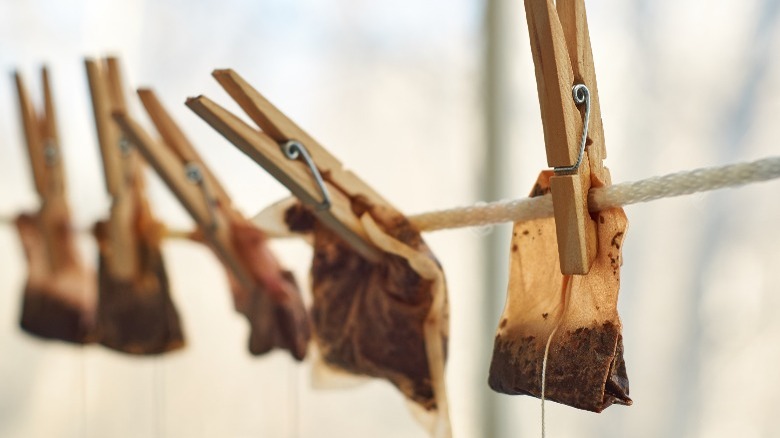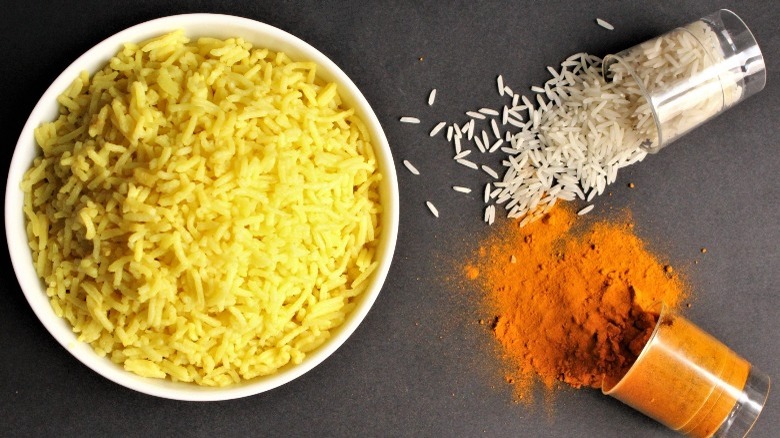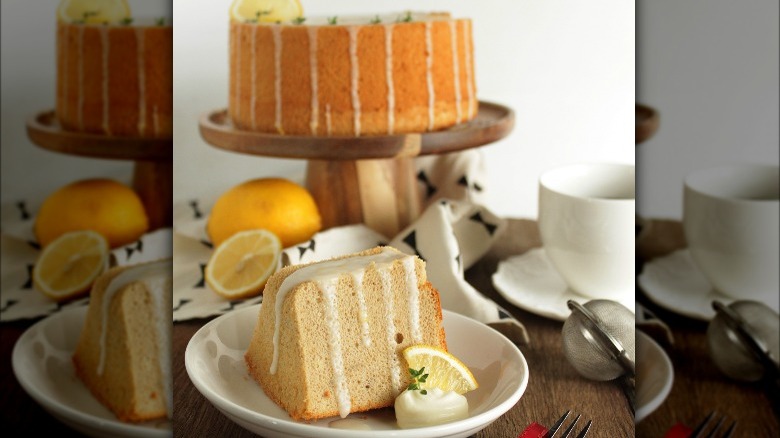The Best Way To Re-Use Tea Bags
Whether you favor black, green, or herbal, the power of tea is unmistakable. A piping hot mug of tea can help jumpstart your day, an iced glass can be a refreshing way to put a little pep back in your step during the after-lunch slump, and the ritual of making yourself a hot cuppa can help to soothe jangled nerves at the end of a long day.
Beyond the excellent flavors and aroma lie tea's medicinal properties and potential health benefits. Nearly every tea brings a little something extra, like the caffeine and beneficial antioxidants called polyphenols in black, green, white, and oolong teas (via Octavia Tea), which all come from the Camellia sinensis plant. Harvard's School of Public Health says that studies have shown a connection between regularly drinking tea (two or three cups of tea) with a reduced risk of premature death, heart disease, stroke, and type 2 diabetes.
And the herbal varieties promise even more benefits. As Healthline points out, studies have shown herbal teas to be helpful in everything from a good night's rest (chamomile), and soothing your upset stomach (ginger), to lowering blood pressure (hibiscus), and the pain of IBS (peppermint), as well as reducing overall inflammation in the body (ginger) and increasing immunity (echinacea).
But there's more than one way to reap the benefits of all these wonderful teas; to get the most out of each and every tea bag or scoop of loose-leaf tea, you should re-use them!
A second dunk: But isn't it weaker?
The easiest way to reuse your tea bags is to give 'em a repeat in a mug of hot water. High-level tea aficionados enjoying loose leaf teas are usually in the know about multiple infusions, getting the most out of their highly curated and more expensive tea collections but in the pre-bagged community, there is a pervasive myth that keeps some from exploring the world beyond that first virgin steep.
Although many insist that reusing tea leaves results in a weaker brew, according to Octavia Tea that's not true if you're using good quality tea leaves. To avoid a weak drink, they do recommend adding 1 minute to your steeping time each time leaves are reused. Eat This, Not That notes that by not giving your tea bags a second or even third steep, you may actually be missing out. The outlet says, "With high-quality teas, you'll actually experience unique flavors after two or three steeps—flavors that you wouldn't taste after just one dunk."
If you do decide to give your bags a second go-round, just be sure to properly store them (preferably in a small amount of water and in the fridge) and re-use them within a few days of that first steep (via Apartment Therapy). The site says to give your used tea bags a "sniff" test before each re-use to make sure they haven't gone bad.
What do I do with all these used tea bags?
Just getting that second cup of tea isn't the only thing you can do with your previously used tea bag. There are a few more ways to maximize your flavor, budget, and the benefits of each and every bag you brew. You can use tea bags, both fresh and re-used, to impart flavor to almost anything you're cooking. Apartment Therapy recommends adding flavor to food by hanging used tea bags in boiling water. You can then use the water to infuse flavor into whatever you're making. You might try flavors like chai or cinnamon in your morning oatmeal or chamomile or cardamom in sweet rice puddings. You can also add a little pop to plain grains, subtly upping the ante by cooking your rice or quinoa in fragrant teas, according to Plum Deluxe.
As My Recipes points out, you can even tenderize meat with leftover black tea. The site recommends using black tea as a marinade — boiling a few bags and then pouring the tea over the meat before cooking. You can also try curing salmon with Lapsang souchong tea, imparting a rich smokey flavor at home.
Let them eat tea cake
But probably the best use of already brewed bags of tea is to mix them into baked goods. Slate explains that bakers can add tea flavor to their desserts by adding tea leaves to a pot of melting butte or by adding dried tea into the batter or dough. Either method works beautifully, with the flavored butter imparting taste and scent but no visual evidence (the tea leaves are strained out after steeping and before use), while the direct mix-in leaves add a beautifully tea-flecked presentation and texture.
For cookies, The Kitchn recommends infusions of Earl Grey, vanilla Rooibos, and chai among others. King Arthur Flour suggests adding matcha to your pastry cream the next time you make cream puffs, a bit of sunny chamomile to the glaze for lemon poppy seed muffins, or whisking in some peppermint-steeped milk for minty grasshopper cupcakes. You can even fold orange pekoe into chess pie for a fresh "sweet tea" take on an old favorite.
With all these beautiful desserts and food combinations, the possibilities for reusing those pre-steeped tea bags are endless, limited only by your preferences, imagination, and tea budget. Sounds like it's time to brew a cup.



